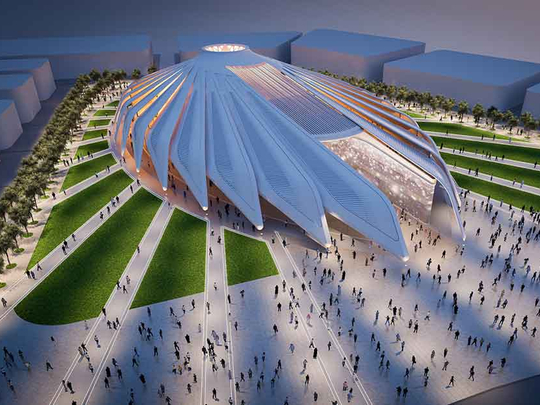
Growth prospects for the heating, ventilation and air conditioning (HVAC) industry in the GCC continue to remain prudent and within single-digit numbers, experts say, citing a cautious approach by the construction sector.
However, green building regulations introduced by governments in the UAE, Qatar and Saudi Arabia, together with the ban on sale and import of inefficient ACs are set to fuel demand for energy-efficient units over the coming years.
Construction projects will remain major drivers, aligned with Expo 2020 in Dubai and the Fifa World Cup in 2022.
“It is still a healthy market with an expected year-on-year single-digit growth of around 3-5 per cent for the coming years,” says George Berbari, CEO at DC PRO Engineering, a district energy company.
Dharmesh Sawant, Senior Manager, HVAC Engineering Team at LG Electronics Middle East and Africa, offers similar numbers. “We see steady growth but there are many projects in the pipeline as a buildup to Expo 2020 in Dubai. I see growth in single digits — around 5-7 per cent.”
In a March report, market research consultancy 6Wresearch forecast GCC sector growth at 7 per cent from 2017 to 2023 on the back of global events,
infrastructure development activities and government initiatives towards providing housing units.
The biggest demand still comes from residential housing, followed by hotels and a few commercial projects. “We are also seeing more malls and entertainment centres come up, though there is a glut in the hotel sector in some markets,” explains Berbari.
There are more than 30 main players in the region, including Daikin, which dominates due to expertise in variable refrigerant flow (VRF) manufacturing, Carrier, Super General, Johnson Control (York), LG, Samsung, Maxcell, Hitachi and local manufacturers such as SKM, Al Zamil, Gami and Al Issa.
Sustainability
Other countries are following the UAE model, notes Sawant. “One of the big game changers is the implementation of the sustainability model in the UAE. Dubai and Abu Dhabi are the first governments in the region to implement sustainability guidelines and create regulations to ensure that developers are implementing the guidelines in design as well as HVAC systems.” Other countries are following suit, he adds.
The leading entities are Dubai Municipality, Estidama in Abu Dhabi as well as Trakhees-EHS (for Dubai World) and Dubai Silicon Oasis with its own green building regulations. “The Emirate of Sharjah is also coming up with new regulations on similar lines,” Sawant says.
Hence, the next emerging trend is developers insisting on higher efficiency in air conditioning. “Earlier, it was only about price. But since the green building regulations [started being implemented], they first consider whether manufacturers are compliant even before discussing the price.”
This has in turn led to manufacturers looking at increasing the efficiency of their systems — through redesigned compressors and a move towards inverter compressors. “While inverter compressors help in reducing the starting and running current, the improvements in systems efficiency will help the governments in the Middle East,” explains Sawant.
However, Berbari points to market resistance. DC PRO is trying to promote new efficient systems such as water-cooled ACs and radiant cooling systems, he says, which would save 40-50 per cent electricity over air-cooled systems. There is still a high dependence on traditional systems in villa, town housing and low rise residential projects, he adds.
“So until current electric tariff slab rates on district cooling and centralised systems are lowered by utility providers, the high bills will cause people to choose traditional systems over efficient systems for residential projects.”
All about VRF
6Wresearch sees a market recovery this year. “From the last quarter of 2016, the construction market of GCC reported positive growth owing to improvements in the oil sector,” says Prijo Samuel, Assistant Manager at 6Wresearch. “As a result, the GCC air conditioner market is anticipated to recover in the coming years.”
All agree that the VRF segment holds the biggest growth potential. Sathi Paul, Research Analyst at 6Wresearch, says the centralised air conditioner segment accounts for the major revenue share in the overall GCC AC market. Within this segment, the VRF sub-segment registered the highest growth rate.
Berbari agrees: “We see district cooling and VRF as the fastest-growing sectors in the region, though VRF is still not being used as sufficiently as needed.”
Sawant says that LG is working on Diamond Developers’ Dh1.1-billion Sustainability City project, which has a heavy usage of VRF systems.
Meanwhile, Berbari proposes that with Dubai and the Gulf situated on a high water table, shallow geothermal systems for heat rejection could also be utilised in this region. Any takers?
KEY DRIVERS OF GROWTH
In the coming decade, developmental strategies from the regional governments such as Abu Dhabi Vision 2030, Saudi Arabia Vision 2030, Kuwait Vision 2035, Qatar Vision 2030, Oman Vision 2020 and Bahrain Vision 2030 are further expected to fuel the growth of construction market, said 6Wresearch in their industry update released in March 2017.
“In order to fulfill the vision and to prepare for the upcoming events, the governments are increasing their spending on construction industry resulting in the construction of mega projects, which [in turn] would boost the air-conditioner market in the region. For instance, the Qatar Government is planning to spend $100 billion on infrastructure projects over the next five years,” it noted. Meanwhile, the Kuwait Ministry of Public Work has announced 13 infrastructure projects worth $11 billion under its current development plan, it added.












